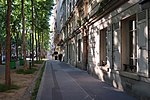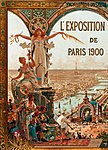Grande Roue de Paris

The Grande Roue de Paris was a 96-metre (315 ft) tall Ferris wheel built in 1900 for the Exposition Universelle world exhibition at Paris. Financing the "Grande Roue de Paris" happened by the creation of the "Paris Gigantic Wheel and Varieties Company" and selling the shares of this company.It was the tallest wheel in the world at the time of its opening. Théodore Vienne, the industrialist and founder of the Paris–Roubaix cycle race, was both owner and director of the Grande Roue de Paris. It was disassembled between 1920 and 1922 and rag-and-bone merchants used the pods as huts to carry on their trade. This evolved, through second-hand shops, into the antique trade that is now to be found on the site and known as the Swiss Village. The passenger cars were removed from the wheel and used as homes for French families when the region was devastated by World War I. Almost 90 years passed between its construction and a taller wheel, the 107.5-metre (353 ft) Cosmo Clock 21, being built in Japan.
Excerpt from the Wikipedia article Grande Roue de Paris (License: CC BY-SA 3.0, Authors, Images).Grande Roue de Paris
Avenue de Suffren, Paris 7th Arrondissement (Paris)
Geographical coordinates (GPS) Address Phone number Website Nearby Places Show on map
Geographical coordinates (GPS)
| Latitude | Longitude |
|---|---|
| N 48.852222222222 ° | E 2.2991666666667 ° |
Address
Caboodle
Avenue de Suffren 61
75007 Paris, 7th Arrondissement (Paris)
Ile-de-France, France
Open on Google Maps










